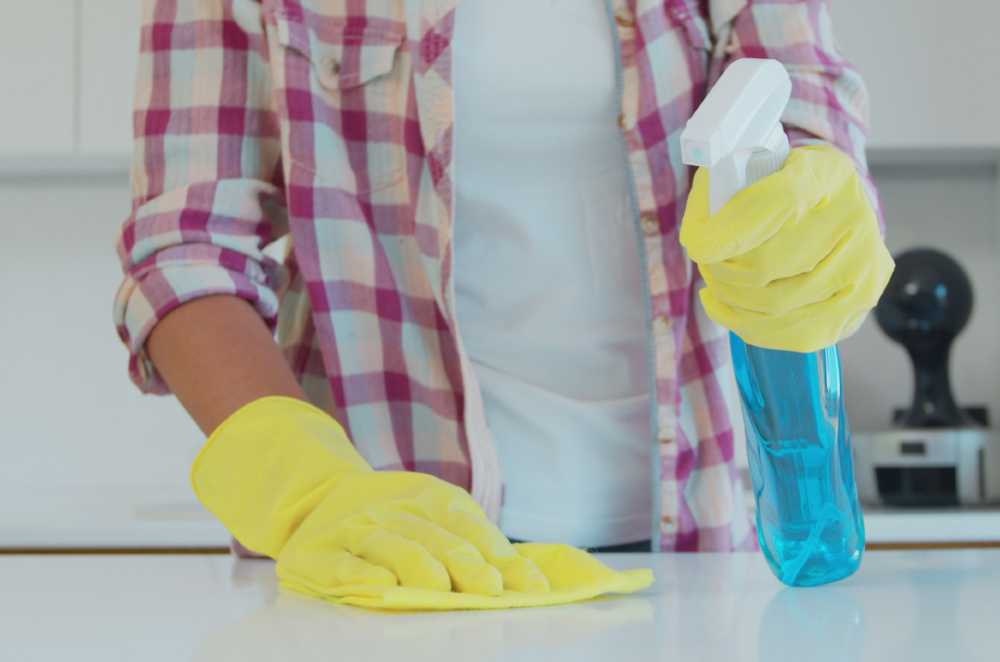Mold will grow anywhere that remains damp or wet for an extended period. If you have mold, you’re likely to ask does ammonia kill mold? The truth is a number of household chemicals will kill mold, including ammonia. In fact, ammonia is one of the most effective methods of killing mold. However, it’s also potentially dangerous. We look at how to kill mold with ammonia and what safety precautions you need to take when using it.
How To Kill Mold With Ammonia
Ammonia is effective at killing any type of mold. Typically all you need is a spray bottle and ammonia, but a rag or a scrub brush is also helpful.
- Fill A Spray Bottle With Ammonia – Fill a clean spray bottle with ammonia.
- Spray Mold With The Ammonia – Spray the ammonia directly on the mold and allow it to work for 15 to 30 minutes.
- Wipe Or Scrub The Area Clean – Use either a rag or a scrub brush to wipe away the mold.
You can use this method to kill mold, no matter the size of the affected area. However, mold is a symptom of moisture. While ammonia does kill it, the mold will eventually return as long as the moisture remains.
Humidity and condensation is usually the cause of mold in kitchens and bathrooms. Steam from cooking or hot showers will condense on walls and ceilings. Clean with ammonia will kill the surface mold, but new mold will eventually appear.
Plumbing leaks or floods will cause mold in other rooms. Again, you can kill the mold but it will come back as long as the water remains. This is why you need to address the water issue after using ammonia.
If you don’t fix the cause, mold can grow deep inside porous materials. Wood, drywall, and cabinets will rot and carpets will fall apart.
Additionally, ammonia’s cleaning power does have limits. While it will kill mold, it cannot penetrate deep into porous materials. So it’ll kill the mold on the surface, but mold growing inside the material will remain.
Always Take Safety Precautions When Using Ammonia
It’s also important to remember that ammonia is toxic. That’s actually what makes it an effective cleaner. And if you’ve ever opened a bottle of ammonia, you know that it has an extremely intense smell.
Ammonia is extremely harsh and can irritate skin and eyes. Breathing it in can cause respiratory issues and you may even faint. In rare conditions, ammonia can even burn the inside of your nose, your throat, and your lungs
Additionally, avoid mixing ammonia with other chemicals. It is especially important that you never mix it with bleach. Ammonia and bleach create toxic gases that will suffocate you.
How To Safely Use Ammonia
When using ammonia on mold, always take the following precautions to stay safe.
- Work In A Well-Ventilated Area – Open windows and doors to allow plenty of fresh air to circulate.
- Cover Your Skin – Wear pants, long sleeves, and rubber gloves to prevent skin irritation.
- Wear A Ventilator – Use a high-quality ventilator to avoid breathing in ammonia fumes. Paper or cloth masks do not provide enough protection.
- Protect Your Eyes – Instead of safety glasses, wear goggles that completely surround your eyes.
- Secure Pets And Young Children – Keep pets and young children out of the area for at least 3 hours after using ammonia.
When Should Consider More Than Just Ammonia To Remove Mold
Although ammonia is effective at killing mold, it only treats the symptom. And while technically you can spray down your entire house with ammonia, that’s not really a reasonable solution to the problem.
If you’ve killed mold with ammonia several times or if the area is larger than 10 square feet, it’s time to consider alternatives. The only sure-fire way to kill mold permanently is to fix the water issue and repair the damage.
The Mold Removal Process
The actual process will vary depending on the exact situation, but these steps apply in most circumstances
- Address The Moisture Problem – Locate and repair the water source that is causing the mold.
- Dispose Of Contaminated Materials – Remove and properly throw away items contaminated with mold.
- Disinfect And Deodorize Your Home – Kill the mold and remove odors by disinfecting and deodorizing your home.
- Rebuild The Area – Restore the damaged area to its original condition.
If you’re tired of constant cleaning, stop asking does ammonia kill mold and get a permanent solution. For a free on-site estimate and immediate response, call 1-888-443-3110 to speak with our on-call mold removal expert near you.





